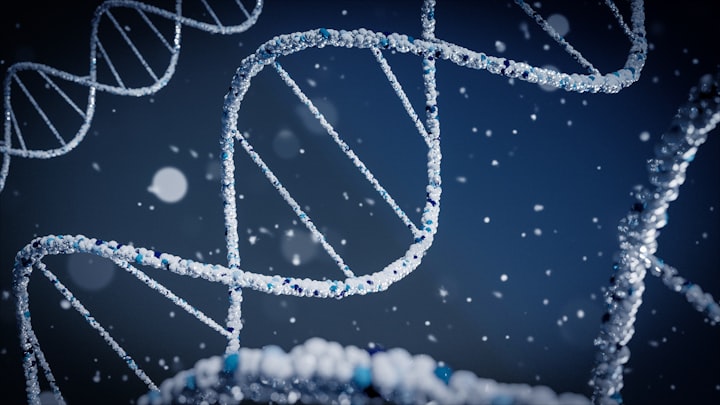What Happens to Your Brain When You Fall in Love?
(HEART VS BRAIN)

One of the nicest feelings in the world is falling in love, and it's possible that other animals also experience this. Animals have been observed pairing up in pairs, or two-by-two relationships. Regardless of whether a nesting pair of robins may be deemed to be in a romantic relationship, we're still very curious as to why animals might couple off. Biologists now have access to a vastly improved set of tools, and some are making use of this technology to understand the physiology of both pair bonding and romantic love.
Researchers researched voles instead of robins to better understand the complexities of pair bonding. Although prairie voles and montane voles are closely related rodents, the latter exhibit promiscuous mating behaviour while the former create lifelong pair bonds after mating. The research of Thomas Insel, director of the National Institute of Mental Health (NIMH), and colleagues demonstrated that the hormones oxytocin and vasopressin can be connected to a variety of mating behaviours.
Oxytocin promotes milk and childbirth, whereas vasopressin controls kidney function and narrows blood vessels. More recent studies have linked the two hormones to a variety of social behaviours, including choosing partners, cooperating, and deducing the emotions of others. Particularly oxytocin has relaxing effects and appears to promote interpersonal trust.
The distribution of oxytocin and vasopressin receptors in the voles' brains is the primary physiological distinction between these two species of vole. In the amygdala, the region of the brain responsible for the creation of memories associated with emotions, as well as in numerous regions of the dopamine reward system, prairie voles had a higher density of both types of receptors.
When prairie voles mate, both hormones are released, which causes pair bonds to form. Prairie voles become promiscuous when the hormone release is stopped. Perhaps more tellingly, montane voles that have undergone genetic modification to produce vasopressin receptor distributions similar to those of prairie voles develop monogamy.
Dopamine has a significant role in the situation as well. Dopamine is released into the body and used by the brain to reward actions like having children or eating a substantial meal. Without mating—just a cordial encounter would do—voles that have been rendered more sensitive to dopamine can acquire partner preferences. Blocking dopamine receptors prevents voles from developing any sort of mate preferences.
Rodent cocaine addiction involves many of the same dopamine receptors and pathways that are involved in pair bonding in voles. This gives a potential justification for the enthralling sensation of love.
Early phases of romance in people are associated with lower levels of the neurotransmitter serotonin and of a serotonin receptor, according to research by Donatella Marazziti, professor of psychiatry and director of the laboratory of psychopharmacology at the University of Pisa.
Obsessive-compulsive disorder also results in a depletion of these two molecules. It is tempting to conceive of early love as a weak, transient version of obsessive behaviour as both conditions (to varying degrees) also lead to anxiety sensations and intrusive thoughts. Higher concentrations of several distinct chemicals linked to the stress response are another characteristic of early romance. Serotonin and the stress-related molecules return to normal levels 12 to 18 months into a relationship.
Functional MRI studies have been conducted by scientists like Semir Zeki of UCL in London and Helen Fisher of the Department of Anthropology at Rutgers University to determine the brain regions that are activated or deactivated by romantic love. Researchers have discovered that individuals experiencing romantic love exhibit higher activity in a variety of brain areas related to the dopamine reward system. The hypothalamus is not activated during parental love, indicating that the hypothalamus may be in charge of the sexual aspect of romantic love.
The frontal and prefrontal cortices, as well as the amygdala, exhibit decreased activity. The amygdala is linked to fear and aversive learning, which is when a person learns from their mistakes. The executive processes of analysis and judgement, delayed gratification, and event prediction are all related to the frontal and prefrontal cortices. We can hypothesise that decreased activity in these areas explains why people who are in love don't seem to fully understand these specific functions. In her 2008 TED talk, Fisher brilliantly summarizes some of her results.
There is still much to learn about the physiology of love, and study is ongoing. Researchers have discovered patterns of hormone and brain activity that appear in romantic relationships in humans and have begun to explain the pair bonding of animals like voles. What physiology teaches us about love is what we already knew: that it is a demanding experience bordering on addiction or compulsive disorder, that it clouds one's judgement and causes one to act hastily, and that as it develops, these disruptions disappear and are replaced with peace and joy.
About the Creator
Zenia Samson
Hi, I'm Zenia and I love to get information and know the facts as I believe in the motto of "Knowledge is power" and I would love to be a powerful person.
Here im going to share my power with you
Thanks!






Comments
There are no comments for this story
Be the first to respond and start the conversation.